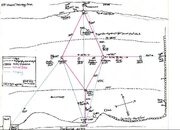Marek K
Contributor
Like I said, my son an I were there on Labor Day Saturday.
How'd the water temp fall in a few weeks from 90F down to 72F?? Even with cold(er) air, seems like that large a body of water would take a lot longer to cool down.
Hmmm... Never though of doing the surface interval in the water...
How'd the water temp fall in a few weeks from 90F down to 72F?? Even with cold(er) air, seems like that large a body of water would take a lot longer to cool down.
Hmmm... Never though of doing the surface interval in the water...




 .
.
